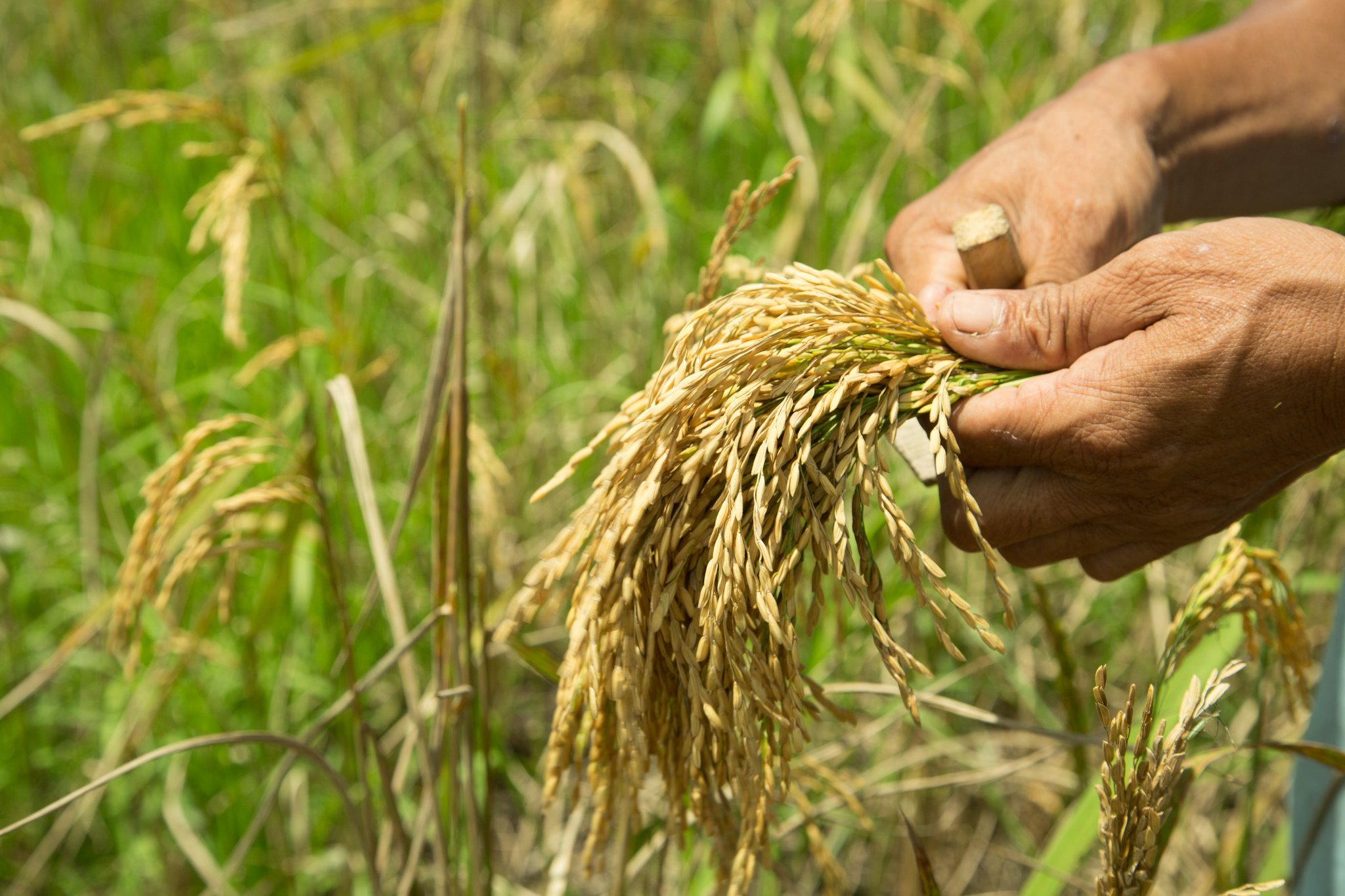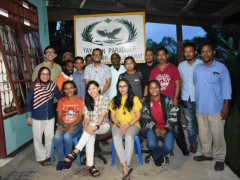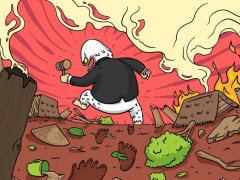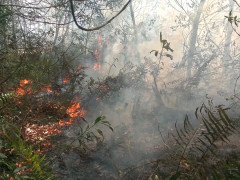Talang Tuwo Inscription, Local Wisdom Protects Peat Ecosystem (3)
By Parliza HendrawanLearning to Process Peat from Transmigrants in Ogan Komering Ilir
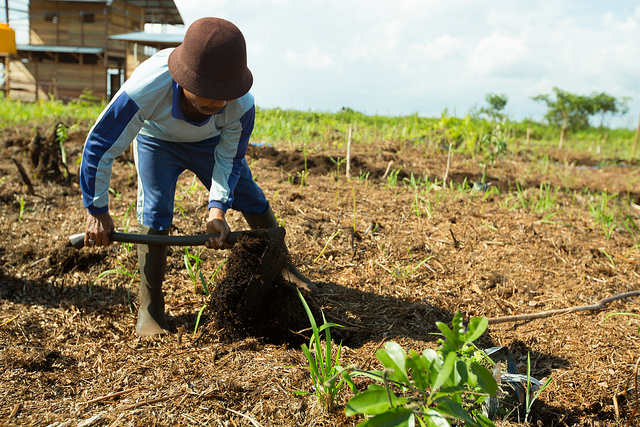
When Javanese transmigrants arrived in the Ogan Komering Ilir district of South Sumatra, they could not grow crops, because they didn’t know how to manage the peatland. They learned the sonor technique of burning the land before seeding from local villagers. Now, community members’ livelihoods are threatened by the government prohibition on peatland burning.
Pak Sukirman is a transmigrant from Java who has lived in Nusantara Village in the Ogan Komering Ilir (OKI) district since 1981. The first time he set foot in the village, Sukirman and the other transmigrants he arrived with were clueless about peat and how to manage it to meet their needs. After two years in Nusantara, they still had not successfully cultivated the land, because the peatland was so different from the land in Java.
“When we arrived in Sumatra in June 1981, we were surprised. We were supposed to receive the government subsidy for two years, but we could not process the land well, because the peat was too wet,” Sukirman explains.
After the land fire in 1982, the peat in Nusantara Village became so dry that the community tried planting seeds such as corn, spinach, cucumber, and cassava. At that time, the peatland’s condition was still in the form of stacked timber. Until the dry season in 1983, the community could plant on the land. However, planting techniques in peatland were not as easy as one might imagine. It took a long time for Nusantara villagers to understand the characteristics of peat and convert the burned peatland into productive agricultural land.
“It was indeed difficult in the beginning. We had to cut down the plants first; usually there were partisans and rasau (a type of pandan plant) growing wild, so it was difficult to clear the land.
The heat from the sun during dry season made it easier,” Sukirman says; “In one sub-district, there are 42 thousand hectares of peatland spread over 19 villages. These lands have now become productive.”
Over time, the OKI community came to understand that peatland is fertile and can grow coffee, paddy, coconut, and other secondary crops.
In 2005, the government started to pay attention to transmigrants in the OKI district and began holding agricultural programs for them. Unfortunately, the government assumed that transmigrants could not cultivate the peatland. As a result, the government programs held did not teach the local community’s peatland cultivation techniques.
Habibi, a young man from Perigi Village and a member of the Peatland-Processing Community (KOMPAG), reports that there were several government programs that did not reflect local OKI wisdom and culture. In 2006, for example, the government conducted a program on planting oil palm seeds in peatland.
“It is obvious that oil palm dries out the peat. Moreover, the planting schedule for oil palm is different from that of local crops. It is only planted once annually, so if something goes wrong, the community is at risk,” explains Habibi.
For generations, Perigi villagers have managed peatland using the sonor technique—burning the land before sowing seeds. Each villager burned a maximum of two hectares for seeding at the same time as others, and together the villagers ensured the flames did not spread to other lands. Once the land was dry, they cut down the wild plant growth and began seeding.
Peatland needs to be burned to reduce pyrite, a compound that oxidizes in dry conditions. If the oxidized pyrite is exposed to water, it becomes sulfuric acid, which is highly acidic and poisons plant roots. This is why pyrite must be removed from peatland by burning it.
“If the native grass is removed with herbicide, it turns into rust, because the dried pyrite it creates causes a disease in rice. But, if burned, the pyrite is reduced,” Habibi clarifies.
Regrettably, government regulations prohibiting burning peatland have become a challenge for the OKI community resulting in considerable financial losses. The sonor technique is no longer possible, so it takes a much greater effort to process peatland into productive land. This has definitely impacted the OKI district economy.
For years, the OKI community has only grown crops to meet their daily needs. Over time, the increasing abundance of crops was repurposed to build houses and generate income to send children to school. Since the prohibition on land burning, it has been difficult for the community to make ends meet.
Both Sukirman and Habibi say that it was not the sonor technique that caused the peatland fires in their area; it was the canalization conducted by palm oil companies. Oil palm plantations dried out the peat, making it more flammable, so the community could only grow rubber trees and coffee.
When investors arrived in the area, the OKI community was disapproving. The local government had more power than the community itself, but both were powerless to stop the investor development. The OKI community believes the government should have involved local people—who have hands-on experience with peat—in decision-making processes about land clearance permits in the area.
“Peat must be managed by big investors? That’s not true. If peat restoration processes do not adapt to nature, they won’t work,” says Sukirman.
The OKI community expects the government to protect peatlands, so there is space to preserve the peat and land governance aligns with the local economy. If the government develops additional regulations on peatland management, they should maintain the local land management practices that have been passed down for generations.
